
Sándor Ferenczi was a Hungarian psychoanalyst, a key theorist of the psychoanalytic school and a close associate of Sigmund Freud.
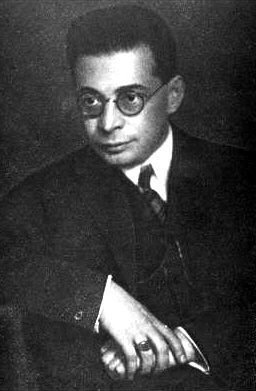
Otto Rank was an Austrian psychoanalyst, writer, and philosopher. Born in Vienna, he was one of Sigmund Freud's closest colleagues for 20 years, a prolific writer on psychoanalytic themes, editor of the two leading analytic journals of the era, managing director of Freud's publishing house, and a creative theorist and therapist. In 1926, Rank left Vienna for Paris and, for the remainder of his life, led a successful career as a lecturer, writer, and therapist in France and the United States.
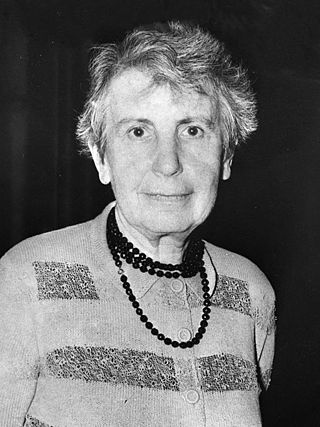
Anna Freud CBE was a British psychoanalyst of Austrian–Jewish descent. She was born in Vienna, the sixth and youngest child of Sigmund Freud and Martha Bernays. She followed the path of her father and contributed to the field of psychoanalysis. Alongside Hermine Hug-Hellmuth and Melanie Klein, she may be considered the founder of psychoanalytic child psychology.
Person-centered therapy, also known as person-centered psychotherapy, person-centered counseling, client-centered therapy and Rogerian psychotherapy, is a form of psychotherapy developed by psychologist Carl Rogers and colleagues beginning in the 1940s and extending into the 1980s. Person-centered therapy seeks to facilitate a client's actualizing tendency, "an inbuilt proclivity toward growth and fulfillment", via acceptance, therapist congruence (genuineness), and empathic understanding.

Art therapy is a distinct discipline that incorporates creative methods of expression through visual art media. Art therapy, as a creative arts therapy profession, originated in the fields of art and psychotherapy and may vary in definition. Art therapy encourages creative expression through painting, drawing, or modelling. It may work by providing a person with a safe space to express their feelings and allow them to feel more in control over their life.
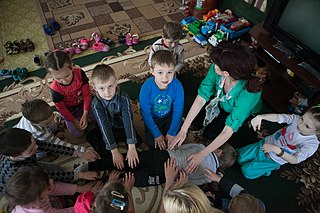
Play therapy refers to a range of methods of capitalising on children's natural urge to explore and harnessing it to meet and respond to the developmental and later also their mental health needs. It is also used for forensic or psychological assessment purposes where the individual is too young or too traumatised to give a verbal account of adverse, abusive or potentially criminal circumstances in their life.
Harriet Claire Wadeson Ph.D., LCSW, ATR-BC, HLM was a pioneer in the art therapy profession, as well as an accomplished author, researcher, and educator, who established and directed the Art Therapy Graduate Program at the University of Illinois at Chicago and the Art Therapy Certificate Program at Northwestern University where she taught up to her passing. She was the author of 8 books on art therapy and over 70 articles in professional journals. She was an international guest lecturer, and educator who has presented papers, led professional delegations, and conducted workshops in 14 countries throughout Europe and Asia.
Child psychotherapy, or mental health interventions for children refers to the psychological treatment of various mental disorders diagnosed in children and adolescents. The therapeutic techniques developed for younger age ranges specialize in prioritizing the relationship between the child and the therapist. The goal of maintaining positive therapist-client relationships is typically achieved using therapeutic conversations and can take place with the client alone, or through engagement with family members.
Virginia Mae Axline was a psychologist and one of the pioneers in the use of play therapy. She wrote the book Dibs in Search of Self. She was also the author of Play Therapy, published in 1947.
Joan Mowat Erikson was well known as the collaborator with her husband, Erik Erikson, and as an author, educator, craftsperson, and dance ethnographer.
Frances E. Anderson is an art therapist. She is a recipient of the Fulbright Senior Scholar Award.
Don Jones was an American artist and art therapist, fourth American Art Therapy Association (AATA) President, Honorary Life Member of AATA, and one of five founders of the American Art Therapy Association.

Edith Kramer (1916–2014) was an Austrian social realist painter, a follower of psychoanalytic theory and an art therapy pioneer.
Margaret Naumburg was an American psychologist, educator, artist, author and among the first major theoreticians of art therapy. She named her approach dynamically oriented art therapy. Prior to working in art therapy, she founded the Walden School of New York City.
Michael Edwards was a painter, pioneer art therapist, analytical psychologist and curator of the picture archive of the artwork of patients of C. G. Jung. He was also the first Emeritus Professor of Art Therapy at Concordia University in Montreal, Canada.
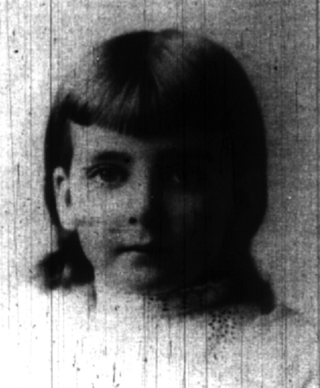
Florence Cane was a notable American art educator whose ideas influenced the field of art therapy.

The Expressive Therapies Continuum (ETC) is a model of creative functioning used in the field of art therapy that is applicable to creative processes both within and outside of an expressive therapeutic setting. The concept was initially proposed and published in 1978 by art therapists Sandra Kagin and Vija Lusebrink, who based the continuum on existing models of human development and information processing.
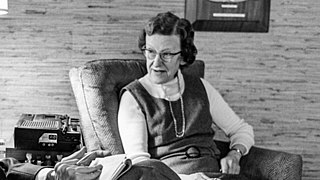
Margaret Beall McFarland was an American child psychologist and a consultant to the television show Mister Rogers' Neighborhood. She was the co-founder and director of the Arsenal Family and Children's Center in Pittsburgh, and much of her work focused on the meaning of the interactions between mothers and children. Fred Rogers referred to McFarland as his major professional influence.
Cathy Malchiodi is an American licensed professional mental health counselor, registered expressive arts therapist, and art therapist, best known for her work on trauma-informed treatment in expressive arts therapy.
Natalie Rogers (1928–2015) was an early contributor to the field of humanistic psychology, person centered psychology, expressive arts therapy, and the founder of Person-Centered Expressive Arts. This combination of the arts with psychotherapy is sometimes referred to by Rogers as The Creative Connection. The daughter of Carl Rogers, one of the founders of humanistic psychology, she established her own center, the Person-Centered Expressive Therapy Institute. Her writings, teachings, and practice introduced many to the power of creative arts for healing both within and outside the therapeutic setting.








